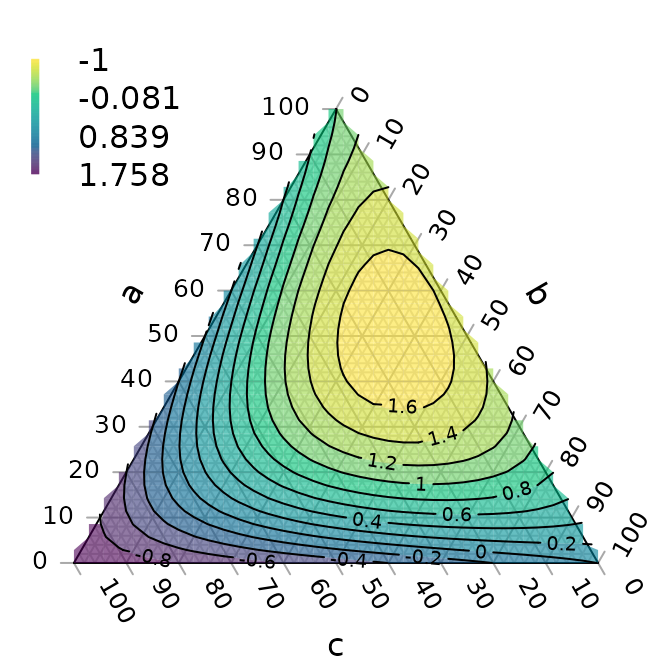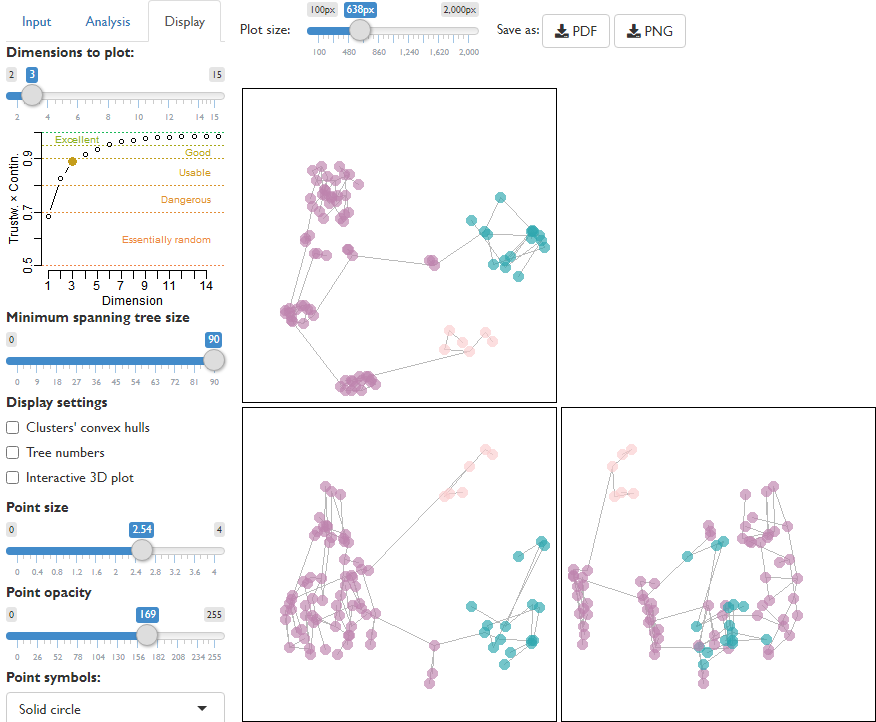Staff profile
Professor Martin Smith
Professor in Palaeontology and Director of Education

| Affiliation |
|---|
| Professor in Palaeontology and Director of Education in the Department of Earth Sciences |
Biography
I am interested in the origins of the modern animal groups. My work includes the study of unusual organisms from Burgess Shale-type deposits and their microscopic counterparts, the Small Carbonaceous Fossils. I also have an interest in the preservation of these remarkable fossils, and the mathematical techniques used to reconstruct evolutionary history from palaeontological evidence.
Administrative roles
2022–2025: Director of Education, Department of Earth Sciences
Career history
2015–present: Department of Earth Sciences, Durham University
2012–2015: Junior Research Fellow, Clare College, University of Cambridge
2012: PhD, University of Toronto
2008: MA & MSc, Sidney Sussex College, University of Cambridge
Research opportunities
I am currently inviting proposals for postgraduate research projects in palaeobiology and phylogenetic methods (Masters by Research or PhD). Please get in touch for more information.
Undergraduate research projects are also available for Durham and non-Durham students. Palaeontological Association bursaries may be of interest to potential applicants.
Research software


MapTrees: interactive user interface for the creation, visualization and evaluation of tree landscapes.
TreeTools: utilities for the creation, modification and analysis of phylogenetic trees.
TreeSearch: phylogenetic tree search in R, with an appropriate treatment of ‘inapplicable’ characters.
Rogue: Identify rogue taxa to improve consensus trees.
Publications
Journal Article
- StratoBayes: A Bayesian method for automated stratigraphic correlation and age modellingEichenseer, K., Sinnesael, M., Smith, M. R., & Millard, A. R. (2025). StratoBayes: A Bayesian method for automated stratigraphic correlation and age modelling. Geochronology, 7(4), 545-570. https://doi.org/10.5194/gchron-7-545-2025
- Identifying the Big Questions in paleontology: a community-driven projectSmith, J. A., Dowding, E. M., Abdelhady, A. A., Abondio, P., Araújo, R., Aze, T., Balisi, M. A., Buatois, L. A., Carvajal-Chitty, H., Chattopadhyay, D., Coiro, M., Dietl, G. P., González Arango, C., Kevrekidis, C., Kimmig, J., Mychajliw, A. M., Pimiento, C., Regalado Fernández, O. R., Schroeder, K. M., … Kiessling, W. (2025). Identifying the Big Questions in paleontology: a community-driven project. Paleobiology, 1-24. https://doi.org/10.1017/pab.2025.10042
- ERC2.0 evolutionary rate covariation update improves inference of functional interactions across large phylogenies.Little, J., Meyer, G. H., Grover, A., Michael Francette, A., Partha, R., Arndt, K. M., Smith, M., Clark, N., & Chikina, M. (2025). ERC2.0 evolutionary rate covariation update improves inference of functional interactions across large phylogenies. Genome Research. Advance online publication. https://doi.org/10.1101/gr.280586.125
- Reply to comments on: Omnidens appendages and the origin of radiodont mouthpartsLi, W., Yang, J., Yang, X., Dhungana, A., Wang, Y., Zhang, X., & Smith, M. (2025). Reply to comments on: Omnidens appendages and the origin of radiodont mouthparts. Papers in Palaeontology, 11(3), Article e70016. https://doi.org/10.1002/spp2.70016
- Shishania is a chancelloriid and not a Cambrian molluskYang, J., Li, W., Chen, A., Du, K., Peng, X., Wang, Y., Zhang, X., & Smith, M. (2025). Shishania is a chancelloriid and not a Cambrian mollusk. Science, 388(6747), 662-664. https://doi.org/10.1126/science.adv4635
- Omnidens appendages and the origin of radiodont mouthpartsLi, W., Yang, J., Yang, X., Dhungana, A., Wang, Y., Zhang, X., & Smith, M. (2024). Omnidens appendages and the origin of radiodont mouthparts. Papers in Palaeontology, 10(6), Article e1600. https://doi.org/10.1002/spp2.1600
- Organ systems of a Cambrian euarthropod larvaSmith, M. R., Long, E. J., Dhungana, A., Dobson, K. J., Yang, J., & Zhang, X. (2024). Organ systems of a Cambrian euarthropod larva. Nature, 633, 120-126. https://doi.org/10.1038/s41586-024-07756-8
- A Bayesian astrochronology for the Cambrian first occurrence of trilobites in West Gondwana (Morocco)Sinnesael, M., Millard, A. R., & Smith, M. R. (2024). A Bayesian astrochronology for the Cambrian first occurrence of trilobites in West Gondwana (Morocco). Geology, 52(3), 205-209. https://doi.org/10.1130/G51718.1
- climenv: Download, extract and visualise climatic and elevation dataTsakalos, J. L., Smith, M. R., Luebert, F., & Mucina, L. (2023). climenv: Download, extract and visualise climatic and elevation data. Journal of Vegetation Science: Advances in Plant Community Ecology, 34(6), Article e13215. https://doi.org/10.1111/jvs.13215
- Evolution: Assembling the Deuterostome body planSmith, M. R. (2023). Evolution: Assembling the Deuterostome body plan. Current Biology, 33(12), R691-R694. https://doi.org/10.1016/j.cub.2023.05.015
- Protomelission is an early dasyclad alga and not a Cambrian bryozoanYang, J., Lan, T., Zhang, X., & Smith, M. (2023). Protomelission is an early dasyclad alga and not a Cambrian bryozoan. Nature, 615(7952), 468-471. https://doi.org/10.1038/s41586-023-05775-5
- The Cambrian cirratuliform Iotuba denotes an early annelid radiationZhang, Z., Smith, M., & Ren, X. (2023). The Cambrian cirratuliform Iotuba denotes an early annelid radiation. Proceedings of the Royal Society B: Biological Sciences, 290(1992), Article 20222014. https://doi.org/10.1098/rspb.2022.2014
- Robust analysis of phylogenetic tree spaceSmith, M. (2022). Robust analysis of phylogenetic tree space. Systematic Biology, 71(5), 1255-1270. https://doi.org/10.1093/sysbio/syab100
- Using information theory to detect rogue taxa and improve consensus treesSmith, M. R. (2022). Using information theory to detect rogue taxa and improve consensus trees. Systematic Biology, 71(5), 1088-1094. https://doi.org/10.1093/sysbio/syab099
- Information theoretic Generalized Robinson-Foulds metrics for comparing phylogenetic treesSmith, M. (2020). Information theoretic Generalized Robinson-Foulds metrics for comparing phylogenetic trees. Bioinformatics, 36(20), 5007-5013. https://doi.org/10.1093/bioinformatics/btaa614
- An algorithm for morphological phylogenetic analysis with inapplicable dataBrazeau, M., Guillerme, T., & Smith, M. (2019). An algorithm for morphological phylogenetic analysis with inapplicable data. Systematic Biology, 68(4), 619-631. https://doi.org/10.1093/sysbio/syy083
- Bayesian and parsimony approaches reconstruct informative trees from simulated morphological datasetsSmith, M. (2019). Bayesian and parsimony approaches reconstruct informative trees from simulated morphological datasets. Biology Letters, 15(2), Article 20180632. https://doi.org/10.1098/rsbl.2018.0632
- Hyoliths are Palaeozoic lophophoratesMoysiuk, J., Smith, M., & Caron, J. (2017). Hyoliths are Palaeozoic lophophorates. Nature, 541, 394-397. https://doi.org/10.1038/nature20804
- Cord-forming Palaeozoic fungi in terrestrial assemblagesSmith, M. (2016). Cord-forming Palaeozoic fungi in terrestrial assemblages. Botanical Journal of the Linnean Society, 180(4), 452-460. https://doi.org/10.1111/boj.12389
- Hallucigenia’s head and the pharyngeal armature of early ecdysozoansSmith, M., & Caron, J. (2015). Hallucigenia’s head and the pharyngeal armature of early ecdysozoans. Nature, 523(7558), 75-78. https://doi.org/10.1038/nature14573
- Hallucigenia’s onychophoran-like claws and the case for TactopodaSmith, M., & Ortega-Hernández, J. (2014). Hallucigenia’s onychophoran-like claws and the case for Tactopoda. Nature, 514(7522), 363-366. https://doi.org/10.1038/nature13576
- Primitive soft-bodied cephalopods from the CambrianSmith, M., & Caron, J. (2010). Primitive soft-bodied cephalopods from the Cambrian. Nature, 465(7297), 469-472. https://doi.org/10.1038/nature09068

